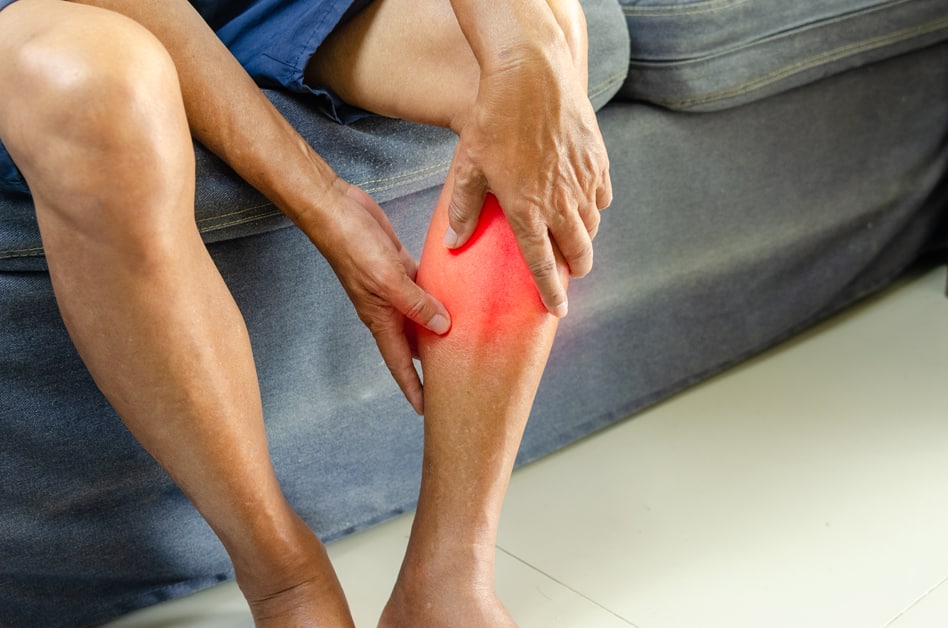Introduction
Knee injuries are quite frequent. From minor to major surgery, they can be anything. Every year, 6.2 million Americans receive medical aid for knee issues alone. Physical activity, age, obesity, and occupational hazards are the usual causes.
In this guide, we’ll explore common ones and how to identify them. We’ll also cover treatments so you can make an educated decision on your knee health. Knowledge brings power! You can prevent future damage or heal existing ones with confidence.
Types of Knee Injuries
Knee injuries are widespread. They can be minor, like sprains and strains. Or, they can be more serious, like fractures and dislocations. Each type of injury affects the knee in different ways. Signs of an injury can be anything from mild pain to extreme discomfort. Knowing the types of knee injuries and how to spot them is very important for getting the right treatment and recovery.
Anterior Cruciate Ligament (ACL) Injury
An ACL injury is a common knee injury. It happens when the ACL (a ligament in the knee) gets stretched, stopped, or hit.
Symptoms include:
- Swelling
- Pain when you bend your leg
- Instability when walking or running
- Instability when changing directions
- Feeling like your knee is giving out
- Hearing a popping sound at the time of injury.
Treatment options include physical therapy, reconstructive surgery, and using crutches. Your doctor can recommend a plan just for you. Physical therapy helps with recovery. It includes exercises to strengthen muscles and increase flexibility. Wrapping and icing the knee can reduce swelling.
In some cases, reconstructive surgery may be needed. This uses a graft from another tendon to restore stability.
Medial Collateral Ligament (MCL) Injury
The MCL is one of four main ligaments that keep the knee in place. It links the top of the tibia and bottom of the femur. It stabilizes your knee for sideways and rotational motion.
Injuries to this ligament usually come from a direct blow or rapid, turning motions. Partial or all of it can tear, depending on the severity. Symptoms of an MCL injury include pain, swelling, weight bearing problems, and difficulty with bending or stretching the knee.
Your doctor may order an X-ray or MRI to evaluate the injury. Treatment could involve:
- Rest, ice and compression
- Physical therapy
- Medications such as nonsteroidal anti-inflammatories or corticosteroids
- Surgery (if the tear hasn’t healed with other treatments. It might involve reattaching the torn ligament or replacing it with a tendon from another part of your body or donor tissue).
Recovery time may be 3-6 months, depending on the severity and treatment used.
Posterior Cruciate Ligament (PCL) Injury
Posterior cruciate ligament (PCL) injuries are caused by trauma to the knee joint. They can range from mild to severe. The PCL connects the femur and tibia.
Direct impact to the front of the knee can cause a PCL injury. It can also happen due to overuse or repetitive movements. Symptoms depend on the severity. These can include: pain, swelling, reduced motion, and instability while walking or running. These may appear immediately, or take time to show up.
Treatment will depend on the injury’s severity. For milder cases, ice and crutches or braces can help. More serious injuries may need physical therapy. Surgery may be necessary for extreme cases, to stabilize the knee structure. Rest is important for recovery, for the body to heal.
Meniscus Tear
A meniscus tear is a common knee injury. It can be caused by contact or from squatting, twisting, and jumping. Symptoms may include
- pain
- swelling
- stiffness in the joint
- an inability to straighten your leg
- a clicking or popping sound when you move your knee
- instability
Treatment options range from rest and physical therapy to arthroscopy and surgery. RICE (rest, ice, compression, elevation) can help reduce swelling and relieve pain. Physical therapy can strengthen muscles around your knee. Depending on the location of the tear, you may require surgery to repair or remove it. Medications such as over-the-counter NSAIDs and steroid injections can also help.
Causes of Knee Injuries
Knee injuries can come from a one-time event, or build up over time. Causes might include:
- Falls
- A collision with something
- Bending the knee in an unusual way
- Having too much of one muscle
- Using it too much
Let’s look closer at each one to understand why they can lead to knee injuries.
Traumatic Injury
Knee injuries from traumatic events, such as falls or blows, are common. Damage to the bones, ligaments and tendons can occur. Fractures, dislocations and tears are some of the most frequent traumatic injuries.
Age and medical conditions can make people more likely to suffer serious injury. Tears in the ligaments and tendons can cause pain, swelling and instability. Strained muscles can lead to mild pain and swelling, and possible limited mobility.
It’s not always obvious that a traumatic injury has occurred right away. Symptoms may not appear for hours. Even if the injury seems minor, it’s important to get medical advice quickly. Immediate diagnosis is key for successful treatment. If you experience any symptoms from a fall or blow to your knee, seek medical help.
Overuse Injury
Overuse injuries refer to pain caused by repetitive motion or strain. For example, running and playing sports can cause overuse due to the bending, twisting and impact on the knee joint. Habits like keeping knees bent for long periods or sitting in weird positions can also cause overuse.
Common injuries caused by overuse include:
- Jumpers knee (patellar tendonitis)
- Runners knee (iliotibial band syndrome)
- MCL sprain
- Meniscal tears
- Bursitis
Symptoms can take weeks to months to appear after the activity or habit began. Pain usually worsens with more activity, rather than improving with rest.
Treatment includes rest, physical therapy, taking NSAIDs, applying ice, compressing, elevating, and using ultrasound and electric nerve stimulation treatment. Bracing and splinting may also be used, and surgery is a last resort option. Stretching and strengthening exercises around the affected area can help reduce the load on the joints.
Symptoms of Knee Injuries
Knee injuries bring many symptoms. It’s essential to spot these signs and get the correct medical help. Symptoms of knee injuries may include:
- Pain
- Swelling
- Instability
- Lack of movement
This part examines the different symptoms linked to knee injuries and how to treat them.
Pain
Knee injuries can cause a variety of symptoms, but most often pain. The severity of the injury can cause anything from mild discomfort to intense pain. It can also be localized in one spot or spread out. Pain can appear suddenly or worsen over time. It can also be felt at rest.
It can worsen when the knee is bent, when walking or running, when weight is put on it, when squatting, or when climbing stairs. Abruptly stopping exercise and sitting for too long can also make the pain worse. Clicking noises near the joint when it is moved are also common signs of knee pain.
Swelling
Swelling is common in knee injuries. It is caused by the buildup of fluid around the joint, called edema. Rest or inactivity, hot tubs and cold-water immersions can increase swelling. Other causes are misuse, trauma, or activities that stress the area.
Home remedies like cold therapy or elastic bandage can reduce swelling. Pain meds and anti-inflammatories might also help.
Instability
Knee instability can be a sign of an injury. It often feels like the joint won’t support your weight. This can cause more pain and weaken your knee. Symptoms include looseness, giving way, swelling, pain and difficulty straightening or bending your knee.
Other signs are:
- Knee shifting or buckling when walking.
- Feeling of weakness or unsteadiness.
- Turning of the lower leg outward.
- Weak feeling in the joint after standing for a while.
- Unstable feeling when moving the joint.
- Kneecap and lower leg muscle pain.
If you experience any of these, it’s important to get help. Ignoring the symptoms can lead to more damage and weakened muscles.
Limited Range of Motion
Knee injuries can cause a variety of symptoms from mild to severe pain. One symptom is limited range of motion when bending or straightening the knee joint. It may be painful to rotate or flex the lower leg joint. This can be due to swelling and inflammation, which puts pressure on the joint and stops full movement. It may not be possible to move fully until the swelling and inflammation are treated.
Other signs of limited range of motion include:
- Stiffness
- Tenderness
- Difficulty bearing weight
- Weakness
- Difficulty walking up/down stairs
- Pain when sitting for too long
Treatment includes rest, medications such as NSAIDs, physical therapy, bracing, ice or heat therapy, and surgery if needed.
Treatment Options
Treating common knee injuries depends on how bad they are, and the kind of damage done. Generally, minor ones can be taken care of with rest, physical therapy and lifestyle changes, like losing weight. More serious injuries may need surgery.
We will talk about all the treatment options for knee problems in this section.
Rest
Rest is a must for any knee injury. Substitute activities that caused the injury with low-impact ones like swimming or walking. Don’t bear weight, as it can cause more damage to your knee and joints.
Secure your injured leg from further harm. If you need a device for support, use it correctly. Ask a medical pro about support devices or physical therapy to reduce more injury risk.
See a doctor to know what treatment works best for you. Rest may be the best option, but consider other choices depending on the severity of your injury and other conditions.
Physical Therapy
Physical therapy can be a solution for knee injuries, depending on the situation. Goal number one is to give the knee joint the proper strength and support. Physical therapists help the patient stretch and strengthen the muscles around the knee, which can increase the range of motion and decrease pain.
Treatment depends on the injury. It can be stretching exercises to restore mobility or strengthening exercises to maintain the stability of the joint. Each person’s condition is different, so a tailored exercise plan is key for recovery.
Surgery
Surgery can treat many medical issues, though it carries some risks. Speak to your doctor to review all the details before deciding.
It may involve removing cells or tumors, as well as rebuilding tissue or organs. Laparoscopic surgery uses small tools and a camera through small cuts. Open surgery needs larger cuts. Robotic surgery employs robots to control instruments. Note the risks and rewards of each procedure.
In emergency cases, the benefits of surgery outweigh the potential risks. Elective procedures improve life quality by helping impaired organs.
Risks include:
- Infection from new openings;
- Reactions to anesthesia;
- Complications from operations; and
- Permanent damage to nerves and vessels.
Prevention of Knee Injuries
Knee injuries are a painful and disabling problem. They can be costly to treat, too. It’s important to take steps to avoid them. Here are some tips on preventing knee injuries. Do it now, before it’s too late!
Strengthen Muscles
Strengthening muscles is a great way to prevent knee injuries. It provides stability and control of the joint. It can also help keep your knees aligned, avoiding injuries.
Those with a past of knee injuries should regularly work on the quadriceps and hamstrings. Leg presses, squats, leg extensions, dead lifts, weighted step-ups, lunges, wall squats and calf raises are great exercises. Know proper technique before attempting any exercise. Bad form can lead to more harm.
Balance and stability drills are also important. Try single-leg stands or balancing on Bosu balls or wobble boards.
Strength training should be done 2-3 days a week with light weights. No more than 2-3 sets at 10-15 repetitions each. Consult a physical therapist if unsure as to which drill is best for you.
Wear Proper Shoes
Wear shoes for cushioning and support to help prevent knee injuries. Athletic shoes are best for sports and exercise. They have shock-absorbing soles, stability features to reduce pronation, and traction patterns for multi-directional movement.
For everyday activities, choose supportive footwear with a cushioning system. This will help keep feet aligned when walking or standing. Replace shoes every 300–500 miles of use. Proper shoes promote joint health and reduce the risk of knee injuries.
Warm Up/Cool Down
Knee injuries can be a real hassle. To help avoid them, warm-up and cool-down exercises should be done before and after physical activity. Warm-ups should last 10-15 minutes and can include light aerobic activity or dynamic stretching. This will help make sure muscles are ready for activity and reduce risk of getting hurt.
After any physical activity, it’s important to cool down for 10-15 minutes. This will reduce muscle soreness and fatigue. Cooling down helps the body return from an active to a resting state. Cool down activities include:
- Light stretches
- Deep breathing
- Gentle walking/jogging in place
Doing a warm-up and cool-down routine properly can help prevent knee injuries and help the body recover from physical activity.
Conclusion
Knee pain is common. It’s hard to find out why. Causes vary from using it too much to a trauma. Identifying the injury and creating a treatment plan is key.
Treatment includes:
- Rest
- Physical therapy
- Lifestyle changes
- Medicines
- Sometimes surgery.
Contact a healthcare professional if the pain doesn’t go away with over-the-counter treatments.
Frequently Asked Questions
Q: What are common causes of knee injuries?
A: Common causes of knee injuries include sports injuries, falls, and overuse. Knee injuries can be caused by direct contact or by twisting, bending, or stretching the knee too far.
Q: What are the symptoms of a knee injury?
A: Symptoms of a knee injury may include pain, swelling, and difficulty moving the knee. If the injury is severe, there may also be bruising, instability, and a visible deformity.
Q: What are the treatment options for knee injuries?
A: Treatment options for knee injuries depend on the severity of the injury. For mild injuries, rest, ice, compression, and elevation can help reduce pain and swelling. Physical therapy and medications may also be recommended. In severe cases, surgery may be necessary.





